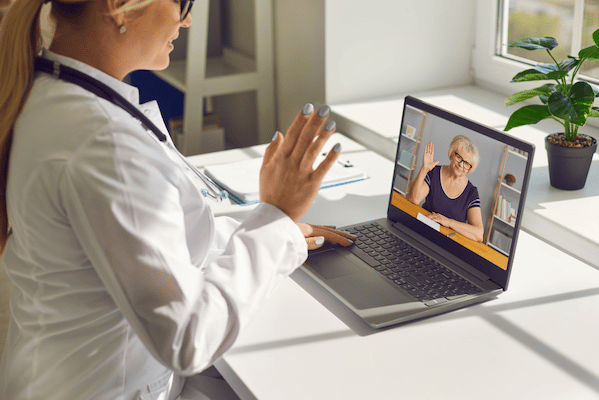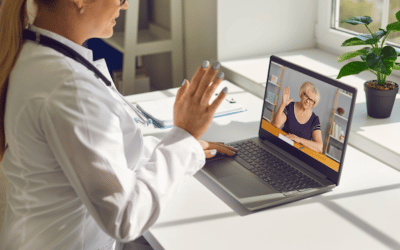When you think of professions that engage heavily with technology, the field of Speech-Language Pathology is not likely top of mind. However, in 2022, it’s difficult to find a career where there isn’t an intersection between what a person is trained to do, and how this interacts with technology. At True Angle, we’re interested in creating S-LP technology that can be used to enhance exercises for those with dysphagia, starting with Mobili-T. Mobili-T is a mobile device designed to affordably and approachably empower patients to complete their swallowing exercises. We are excited to see how technology of the future can influence the field of speech-language pathology and create better systems for our patients.
The role of Speech-Language Pathologists (S-LP) is diverse and therefore, so is the role that technology plays in their practice. We had the chance to talk to a few S-LPs working in different settings and with different populations to see how they use technology in their everyday practice and what it means to them.
On creating engagement and motivation
In our ever-increasing tech world, we have more access to the things that interest us. Technology can play a huge role in increasing our motivation to participate or follow through on therapy. Janna is a S-LP who works in schools with elementary-aged students. She says, “I love technology for engaging my most challenging learners. I can use enticing apps for those who are more difficult to engage.” Motivation to use technology doesn’t stop with kids. Becky is a S-LP who works with outpatients in a rehabilitation hospital. She likes using Tactus Apps with her patients. She explains that her patients are, “excited to be able to have something they can access at home. It allows them to see their progress and share that progress with their therapist.” Seems like no one can resist the draw of video and online games!
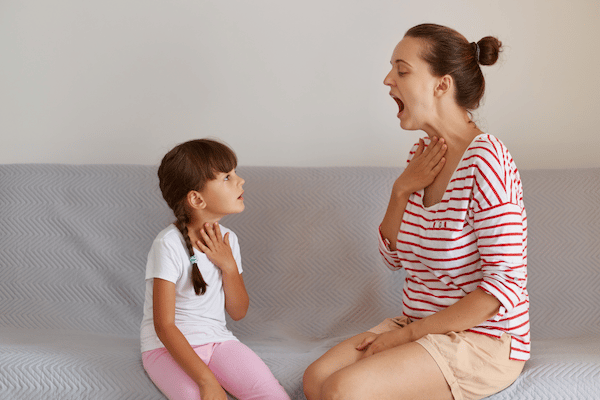
On convenience
We can thank the global pandemic for making telepractice fairly common these days. A lucky portion of the population has adapted to working from home, and that convenience has been extended to other areas of our lives such as therapy. Research into the effectiveness of teletherapy has blown up in the last couple years out of necessity. From treating disorders like apraxia, language delays in toddlers, stuttering, aphasia and traumatic brain-injury, results show teletherapy is effective and likely here to stay1-5. With the right conditions (e.g., good internet connection, a support person), telepractice can be a viable option for patients with dysphagia6. For many areas of speech-language pathology, telepractice can remove barriers to transportation, cost and time that would be difficult to overcome for in-person therapy.
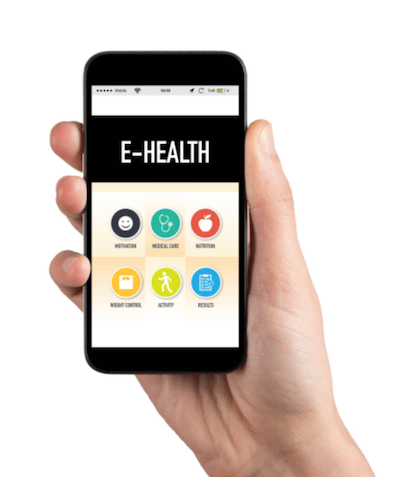
There is also a matter of convenience in terms of incorporating technology that people likely already have in their lives. Sable is a S-LP specializing in voice therapy. She notes that incorporating technology into therapy doesn’t have to be complicated. “I use the tools my patients have, and most of them have a cell phone with their own recording function,” Sable explains. She teaches clients to record themselves on their smart phones and listen back in order to improve their ability to self-monitor, an important step in carrying over techniques learned in therapy, into the real world. The convenience of having your smartphone or therapy tool in your pocket is undeniable.
On inclusion
There is one area of S-LP where the professionals we spoke to felt technology was really pulling its weight. The area of Augmentative and Alternative Communication (AAC) is a heavy hitter and one where many S-LPs might actually consider themselves technology specialists. While there are many low-tech versions of AAC, the high-tech side is rapidly growing with technology becoming more available, affordable and complex. AAC technology is an important part of helping adults who have lost their ability to communicate to once, find their voice. For example, this study looked at how a free AAC app improved quality of life for people following tracheostomy or laryngectomy. It can also offer patients with ALS the opportunity to preserve their voice through message banking8, offering more options for their communication in the future. By giving a literal voice to people, high-tech AAC is helping people to remain included in their schools, workplaces, recreation and community in general.
Megan is a S-LP who works in the community with adults. She often helps connect clients with voice amplification devices which are a form of AAC. She explains, “Amplifiers are such a useful tool to ensure people can still have conversations with loved ones at family dinners, outings with friends, and in many cases to ensure they can still have conversations with partners or family who have hearing impairment. Trying to sustain volume for conversations, especially longer visits, just isn’t functional or achievable in many situations.”
Audra is a S-LP working in classrooms to trial, teach and grant access to AAC. She summarizes her passion for the subject, saying “AAC empowers students to advocate for their wants and needs, participate in classroom activities, and learn language and literacy skills. Even more importantly, AAC allows students to socialize with their peers; share information, ask questions and tell joke. Everybody deserves to have a voice!”
On creating connections
Many of the S-LPs we spoke to praised technology for giving them access to knowledge. When asked what technology in the field meant to her, Lana, a S-LP who works with young children said, “It means access to journal articles, online forums and communities, information, and exchange of information”. Janna shared this view stating that technology gives her “access to information and inspiration”.
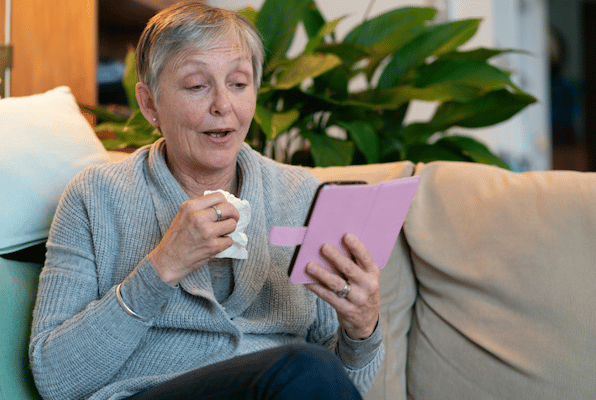
Technology doesn’t just help S-LPs create connections as professionals. Megan likes that technology can provide “opportunities [to patients] for more social connection.” The internet offers a platform where people can find community. In the dysphagia world online support groups are plentiful and can be a great source for creating connections with others in similar situations.
Interestingly, none of the S-LPs we talked to felt they were experts at how to best use the technology available to them, or felt that they were using it to its full extent. Nonetheless, in this fast paced and increasingly tech-based world, it is encouraging to hear how different S-LPs are embracing new technologies. We look forward to seeing how technology continues to influence the practice of S-LPs and the outcomes for those they support.
References
- Thomas, D. C., McCabe, P., Ballard, K. J. and Lincoln, M. (2016), Telehealth delivery of Rapid Syllable Transitions (ReST) treatment for childhood apraxia of speech. International Journal of Language & Communication Disorders. https://doi.org/10.1111/1460-6984.12238
- Retamal-Walter, F., Waite, M., & Scarinci, N. (2022). Families’ and professionals’ perspectives of building and maintaining engagement in telepractice early intervention for young children with communication disability. Disability and Rehabilitation. https://10.1080/09638288.2022.2055161
- Irani, F., & Rojas, R. (2021). Intensive stuttering therapy with telepractice follow-up: Longitudinal outcomes. Folia Phoniatrica et Logopaedica. https://doi.org/10.1159/000519866
- Øra, H.P., Kirmess, M., Brady, M.C., Sørli, H., & Becker, F. (2020). Technical features, feasibility, and acceptability of augmented telerehabilitation in post-stroke aphasia—experiences from a randomized controlled trial. Frontiers in Neurology.https://doi.org/10.3389/fneur.2020.00671
- Rietdijk, R., Power, E., Attard, M., Heard, R., & Togher, L. (2020). A clinical trial investigating telehealth and in-person social communication skills training for people with traumatic brain injury: participant-reported communication outcomes. The Journal of Head Trauma Rehabilitation. http://dx.doi.org/10.1097/HTR.0000000000000554
- Malandraki, G. A., Arkenberg, R. H., Mitchell, S. S., & Malandraki, J. B. (2021). Telehealth for dysphagia across the life span: using contemporary evidence and expertise to guide clinical practice during and after COVID-19. American Journal of Speech-Language Pathology. https://doi.org/10.1044/2020_AJSLP-20-00252
- Haring, C., Farlow, J., Leginza, M., Vance, K., Blakely, A., Lyden, T., Hoesli, R., Heft Neal, M., Brenner, M., Hogikyan, N., Morrison, R., & Casper, K. (2021). Effects of augmentative technology on communication and quality of life after tracheostomy or total laryngectomy. Otolaryngology – Head and Neck Surgery. https://doi.org/10.1177%2F01945998211013778
- Costello, J., & Smith, M. (2021). The BCH message banking process, voice banking, and double-dipping. Augmentative and Alternative Communication https://doi.org/10.1080/07434618.2021.2021554

